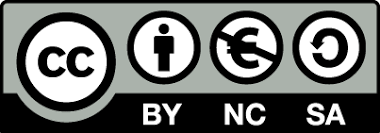| dc.contributor.author | ภาณุมาศ ภูมาศ | th_TH |
| dc.contributor.author | Panumart Phumart | th_TH |
| dc.contributor.author | อารีรัตน์ ลีละธนาฤกษ์ | th_TH |
| dc.contributor.author | Areerut Leelathanalerk | th_TH |
| dc.contributor.author | วิระพล ภิมาลย์ | th_TH |
| dc.contributor.author | Wiraphol Phimarn | th_TH |
| dc.contributor.author | กฤษณี สระมุณี | th_TH |
| dc.contributor.author | Kritsanee Saramunee | th_TH |
| dc.contributor.author | สุรัชดา ชนโสภณ | th_TH |
| dc.contributor.author | Suratchada Chanasopon | th_TH |
| dc.contributor.author | พรชนก ศรีมงคล | th_TH |
| dc.contributor.author | Pornchanok Srimongkon | th_TH |
| dc.date.accessioned | 2025-03-24T04:27:52Z | |
| dc.date.available | 2025-03-24T04:27:52Z | |
| dc.date.issued | 2568-02 | |
| dc.identifier.other | hs3250 | |
| dc.identifier.uri | http://hdl.handle.net/11228/6246 | |
| dc.description.abstract | ภูมิหลังและเหตุผล: โรคหลอดเลือดแดงส่วนปลาย (peripheral arterial disease, PAD) ชนิดรุนแรงที่รวมถึงกลุ่มอาการขาขาดเลือดขั้นวิกฤต (critical limb ischemia, CLI) ส่งผลต่อคุณภาพชีวิตและค่าใช้จ่ายที่เพิ่มขึ้นได้ ปัจจุบันมีการเปิดหลอดเลือดเพื่อช่วยในการรักษา รวมถึงการใช้ขดลวดชนิดเคลือบยา (drug-eluting stent, DES) ซึ่งยังไม่ได้อยู่ในชุดสิทธิประโยชน์ของประเทศไทย วัตถุประสงค์: เพื่อพัฒนาข้อเสนอชุดสิทธิประโยชน์ของการใช้ DES ในผู้ป่วยโรคหลอดเลือดแดงส่วนปลายชนิดรุนแรงในประเทศไทย โดยการประเมินความคุ้มค่าทางเศรษฐศาสตร์ของ DES เปรียบเทียบกับการรักษาผ่านสายสวนชนิดอื่น และการผ่าตัด ศึกษาผลกระทบด้านงบประมาณและความเป็นไปได้ของการจัดบริการ วิธีการศึกษา: ศึกษาต้นทุนประสิทธิผลของใช้ DES เปรียบเทียบกับการเปิดหลอดเลือดด้วยวิธีอื่น ได้แก่ การใช้ percutaneous transluminal angioplasty (PTA) ด้วยบอลลูน การใช้ขดลวดชนิดไม่เคลือบยา (baremetal stent, BMS) และการผ่าตัด open surgery ในมุมมองทางสังคม โดยใช้แบบจำลอง markov model รวบรวมค่าพารามิเตอร์ในส่วนของประสิทธิผลด้วยการทบทวนวรรณกรรมอย่างเป็นระบบ วิเคราะห์อภิมานและจากความคิดเห็นของผู้เชี่ยวชาญ ต้นทุนอ้างอิงจากรายการต้นทุนมาตรฐานเพื่อการประเมินเทคโนโลยีด้านสุขภาพ สำหรับข้อมูลในส่วนของอรรถประโยชน์ได้จากการเก็บข้อมูลปฐมภูมิ วิเคราะห์ความไม่แน่นอนและวิเคราะห์ขีดจำกัดของความคุ้มค่า จากนั้นวิเคราะห์ผลกระทบด้านงบประมาณจากมุมมองของสำนักงานหลักประกันสุขภาพแห่งชาติ (สปสช.) โดยทำนายผลกระทบสำหรับ 5 ปี และศึกษาความเป็นไปได้ของการจัดบริการจากมุมมองของแพทย์ผู้ปฏิบัติงาน และผู้เกี่ยวข้อง ด้วยวิธีการเชิงคุณภาพ ได้แก่ การสัมภาษณ์โดยใช้แบบสอบถามกึ่งโครงสร้าง ผลการศึกษา: DES เป็นวิธีการที่ต้องจ่ายเงินเพิ่มเพื่อให้ได้ quality adjusted life years หรือ QALY เพิ่มขึ้น โดยมีค่า incremental cost-effectiveness ratio, ICER เท่ากับ 78,359 บาท ต่อ QALY (ซึ่งถือว่าคุ้มค่าเนื่องจากอยู่ภายใต้ willingness to pay (WTP) ของประเทศไทยที่ 160,000 บาทต่อ QALY) ส่วน BMS และ Bypass นั้นไม่คุ้มค่าเนื่องจากมี ICER เกินจากค่า WTP และเมื่อทำการวิเคราะห์แบบ scenario analysis โดยการผันแปรจำนวน stent พบว่า หากกำหนดให้ใช้ stent ได้ 1 เส้นนั้น ทั้ง DES และ BMS มีความคุ้มค่าแบบ cost-saving ทั้งนี้ เมื่อพิจารณาจากความเป็นไปได้ในการให้บริการและผลกระทบด้านงบประมาณ โดยคาดว่าจะมีผู้ป่วยที่จำเป็นต้องได้รับ endovascular intervention ที่ร้อยละ 90 ของผู้ป่วย CLI ร่วมกับอัตราการครอบคลุมของการให้บริการโดยแพทย์เฉพาะทางและโรงพยาบาลที่สามารถให้บริการได้ประมาณร้อยละ 20 พบว่าผลกระทบด้านงบประมาณของการรักษาด้วย DES ในปีที่ 0-1 คิดเป็นต้นทุนรวมของการรักษาเท่ากับ 489.78 ล้านบาท ด้านความพร้อมของการให้บริการพบว่า การให้บริการเปิดหลอดเลือดด้วยสายสวนและขดลวดยังมีจำกัดในโรงพยาบาลศูนย์และโรงเรียนแพทย์ สรุปผล: การเปิดหลอดเลือดในผู้ป่วย CLI ในบริบทประเทศไทย พบว่าการใช้ขดลวด DES ถือว่ามีความคุ้มค่า เนื่องจากมีค่าอยู่ภายใต้ความยินดีจ่ายของประเทศไทย และยังได้ค่าปีสุขภาวะที่สูงกว่า BMS เมื่อมีการกำหนดให้บริการขดลวดในผู้ป่วยจำนวน 2 เส้น อย่างไรก็ตามเมื่อกำหนดให้มีการใช้ขดลวดจำนวน 1 เส้นพบว่าทั้ง DES และ BMS มี cost-saving เช่นเดียวกัน ปัจจุบันความครอบคลุมของการให้บริการยังมีจำกัด ดังนั้นควรมีการเตรียมความพร้อมด้านสิ่งสนับสนุนการให้บริการให้ครอบคลุมพื้นที่มากยิ่งขึ้น | th_TH |
| dc.description.sponsorship | สถาบันวิจัยระบบสาธารณสุข | th_TH |
| dc.language.iso | th | th_TH |
| dc.publisher | สถาบันวิจัยระบบสาธารณสุข | th_TH |
| dc.rights | สถาบันวิจัยระบบสาธารณสุข | th_TH |
| dc.subject | ระบบสุขภาพ--แง่เศรษฐศาสตร์ | th_TH |
| dc.subject | หลอดเลือดแดงส่วนปลายตีบ | th_TH |
| dc.subject | Peripheral Arterial Disease | th_TH |
| dc.subject | ขาขาดเลือด | th_TH |
| dc.subject | ค่ารักษาพยาบาล--การวิเคราะห์ต้นทุน | th_TH |
| dc.subject | ภาวะผู้นำและการอภิบาล (Leadership and Governance) | th_TH |
| dc.subject | ระบบการเงินการคลังด้านสุขภาพ (Health Systems Financing) | th_TH |
| dc.subject | เศรษฐศาสตร์สาธารณสุข | th_TH |
| dc.subject | Health Economics | th_TH |
| dc.title | การประเมินความคุ้มค่าด้านเศรษฐศาสตร์ของการใช้สายสวนหลอดเลือดชนิดขดลวดเคลือบยาต้านการตีบซ้ำในการรักษาโรคหลอดเลือดแดงส่วนปลายชนิดรุนแรงในประเทศไทย | th_TH |
| dc.title.alternative | Economic Evaluation of Endovascular Drug-eluting Stent for Peripheral Arterial Disease in Thailand | th_TH |
| dc.type | Technical Report | th_TH |
| dc.description.abstractalternative | Background: Peripheral arterial disease (PAD) with severe manifestations, including critical limb
ischemia (CLI), affecting quality of life and increasing healthcare costs. Currently, the use of
drug-eluting stents (DES) for endovascular interventions is not covered by the Thai healthcare
system.
Objectives: To develop a comprehensive reimbursement proposal for DES in the treatment
of severe PAD in Thailand. This includes evaluating the economic value of using drug-coated
balloons (DCB), bare-metal stents (BMS), and open surgery as alternative treatment options.
Additionally, assessing budget impact and service provision feasibility are necessary.
Methods: A cost-effectiveness study comparing DES with other endovascular interventions,
such as percutaneous transluminal angioplasty (PTA) with a plain balloon, BMS, and open
surgery, was conducted. A Markov model was used to incorporate social perspectives and
provider viewpoints. The cost was referred to the standard cost for health technology
assessment. The utility was obtained through primary data and previous literature. The budget
impact analysis was conducted from the perspective of the National Health Security Office
(NHSO), predicting the budget impact for five years. The feasibility of service provision is also
studied from the perspectives of practicing physicians and stakeholders using qualitative
methods, including semi-structured interviews.
Results: DES required additional costs to gain QALYs, with an ICER of 78,359 baht per QALY,
which is cost-effective under Thailand's willingness-to-pay threshold of 160,000 baht per QALY.
Conversely, BMS and bypass are not cost-effective as their ICERs exceed the threshold.
Scenario analysis showed that if only one stent is used, both DES and BMS become cost-saving.
Assuming 90% of CLI patients need endovascular intervention and service coverage by
specialists and equipped hospitals is 20%, the first-year budgetary impact of DES treatment is
estimated at 489.78 million baht for total treatment costs. However, the availability of catheter
and stent procedures remains limited to regional and university hospitals.
Conclusion: The use of DES for CLI patients in Thailand is considered cost-effective as it falls
within the country's willingness-to-pay threshold and yields higher QALY compared to BMS.
However, cost-saving is achievable with BMS when two stents are used. Furthermore, current
service provision coverage is limited, highlighting the need for improved support and expanded
coverage. | th_TH |
| dc.identifier.contactno | 64-212 | |
| .custom.citation | ภาณุมาศ ภูมาศ, Panumart Phumart, อารีรัตน์ ลีละธนาฤกษ์, Areerut Leelathanalerk, วิระพล ภิมาลย์, Wiraphol Phimarn, กฤษณี สระมุณี, Kritsanee Saramunee, สุรัชดา ชนโสภณ, Suratchada Chanasopon, พรชนก ศรีมงคล and Pornchanok Srimongkon. "การประเมินความคุ้มค่าด้านเศรษฐศาสตร์ของการใช้สายสวนหลอดเลือดชนิดขดลวดเคลือบยาต้านการตีบซ้ำในการรักษาโรคหลอดเลือดแดงส่วนปลายชนิดรุนแรงในประเทศไทย." 2568. <a href="http://hdl.handle.net/11228/6246">http://hdl.handle.net/11228/6246</a>. | |
| .custom.total_download | 15 | |
| .custom.downloaded_today | 0 | |
| .custom.downloaded_this_month | 0 | |
| .custom.downloaded_this_year | 15 | |
| .custom.downloaded_fiscal_year | 1 | |


